 .
.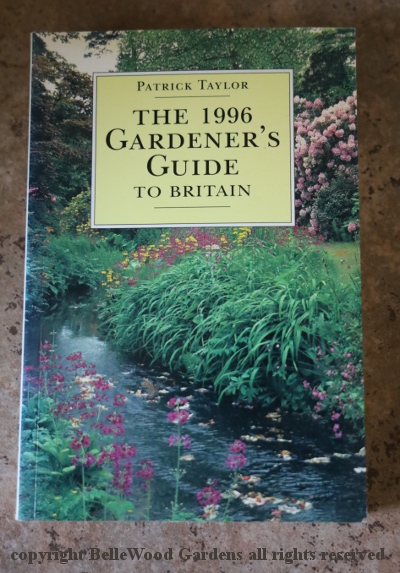
.
If you have any comments, observations, or questions about what you read here, remember you can always Contact Me
All content included on this site such as text, graphics and images is protected by U.S and international copyright law.
The compilation of all content on this site is the exclusive property of the site copyright holder.
The English Gardener's Garden
foreword by Tania Compton and essay by Tony Musgrove
a book review
Wednesday, 22 November 2023
As much as I love to garden, I also love to visit them. Public gardens are easy to locate. It's the private gardens that often need a friend-of-a-friend connection to even learn about them, let alone wangle an ivitation. But there is a way.
 .
.
Here in the United States there's the Garden Conservancy. They search out excellent and interesting private gardens whose owners are willing to open them, just occasionally, for a day or two in the year. Buy the guide, find the state where you live or are visiting, and see what gardens attract your timely attention. Register, pay the modest fee, and hope for good weather.
Britain started it, and their garden guide is a convenient means for both resident gardeners and those travelling from abroad to become au courant with more than museums.(This vintage edition is a delightful reminder of my many years ago visit, with marginalia refreshing my memories.) But what if you are at home, perhaps it is winter, you want to make an imaginary journey?
There once was a book . . . Phaidon's 2017 "The Gardener's Garden" encompasses 250 gardens of the world. Enough is enough, and more may be too much. It becomes a matter of trying to remember what country had which garden.
With its 60 gardens, "The English Gardener's Garden" has enough diversity to fascinate the reader without losing them in complexity. The gardens in this book are arranged geographically by county, running north to south. Within each region they are arranged alphabetically, by name.
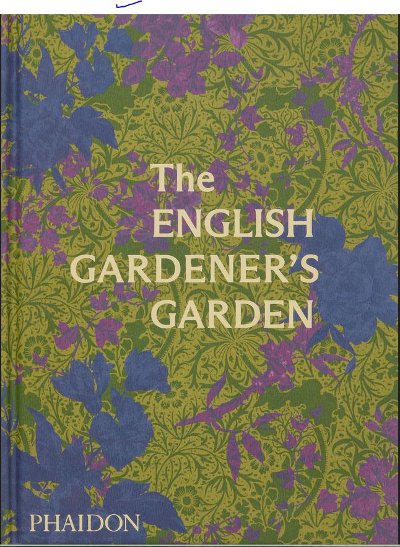
image courtesy Phaidon Publishing
This book explores a range of gardens, both size (quite large to modest in scale) and time (several centuries to contemporary) from formal Renaissance gardens, herbaceous Arts and Crafts gardens of the 20th century, to artistic creations and healing gardens by contemporary designers.
On Thursday, 16 November 2023 the Garden Conservancy hosted a zoom presentation. The three presenters were Tania Compton, author and editor, who gardens six acres of wild meadow in Wiltshire. Tom Stuart-Smith, a landscape architect and garden designer whose work combines naturalism with modernity and built forms with romantic planting. They joined the event from the Garden Museum in London. Dr. Toby Musgrave, who is an authority on gardens and plant history (who now lives, actually, in Denmark.) They discussed a selection of the gardens included in the book. It was interesting to hear of gardens that evolved over time as family ownership continued over the generations. For example, Chatsworth, home of the Duke and Dutchess of Derbyshire, was designed by Lancelot 'Capability' Brown in the 18th century, and Paxton designed the glasshouse in the 1840s. Old school, labor heavy gardening with roses and delphiniums.
Blenheim can justly be described as the masterpiece of 'Capability' Brown's 18th century English landscape tradition.

image courtesy Phaidon Publishing
Much of the bridge is now underwater due to the damming of the river
creating the lake. It still fits perfectly in the view towards the palace.
Some, such as Sir Frederick Gibberd's garden evolved rather than planned / designed. Which makes it difficult to restore today as there is no master plan. As different as could be from grand estates with centuries-long histories is something such as Derek Jarmen's shingle / gravel garden that looks out over a nuclear power station.And others more recent, more modest in scale, and with a focus on ecological / modernism, environmental, wildlife friendly.
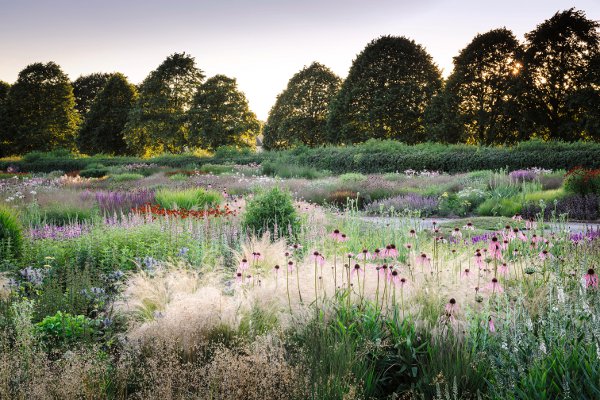
image courtesy Phaidon Publishing
Hauser & Wirth garden meadow in Somerset, designed by the renown Dutch plantsman, Piet Oudolf.
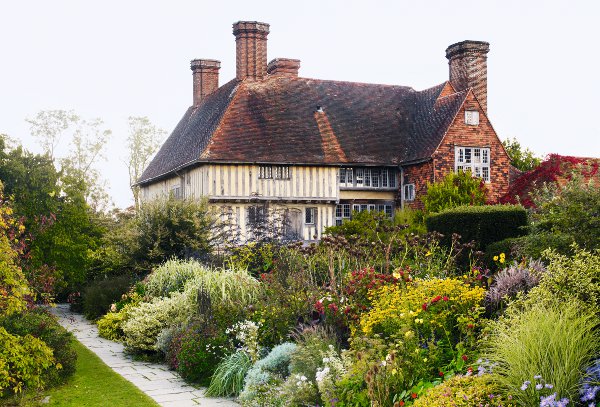
Great Dixter has a family history. Sir Edwin Lutyens was involved when Nathaniel Lloyd lived there. His son, Christopher Lloyd, enfant terrible of 20th century horticulture transformed the Arts and Crafts garden into a palette for contemporary ideas. Here, the diversity of wildlife (insects are wildlife too) is greater than surrounding areas. Now managed by head gardener Fergus Garrett, Christo's legacy continues, owned by a charitable trust.
Or, Lowthur Castle Garden, Penrith, Cumbria - the roof was pulled off the castle
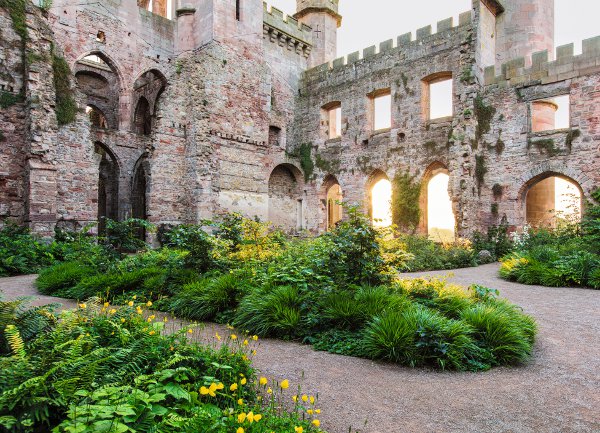
image courtesy Phaidon Publishing
when money ran out in contemporary times. Today, Dan Pearson's 20 year plan
(begun in 2012) adds new layers to the exisiting history, begun in the 17th century.
Or Hestercombe Gardens, that wonderful Gertrude Jekyll, Edwin Lutyens
collaboration located in Taunton, Somerset. Fifty acres, 18th - 20th century
<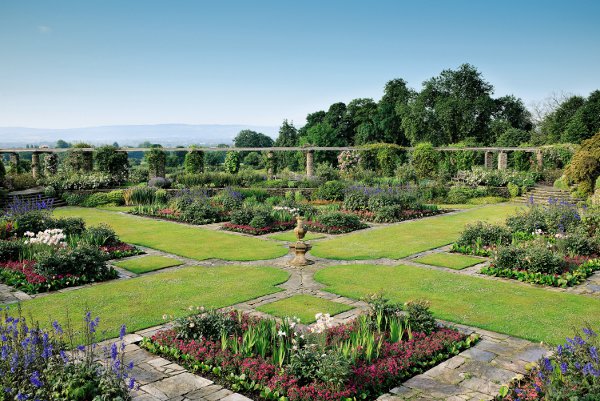
image courtesy Phaidon Publishing
"The English Gardener's Garden" is a picture-heavy compendium. Each garden has an opening half page of information. Some gardens are presented in more detail that others. Be fair - there must be an entire book about Sissinghurst, all on its own. Some have multiple pages of images, others just a few pictures. Captions provide a modest description of what's depicted.
The English Gardener's Garden
foreword by Tania Compton and essay by Tony Musgrove
published by Phaidon Company
ISBN: 978 1 83866 634 7, hardcover $49.95
And a generous offer from the publisher.
Enjoy 30% off + free shipping on The English Gardener’s Garden and other Phaidon and Monacelli books with code HOLIDAY at checkout on phaidon.com. Valid through Dec 15.
A review copy of this book was provided by the publisher
Back to the main Diary Page